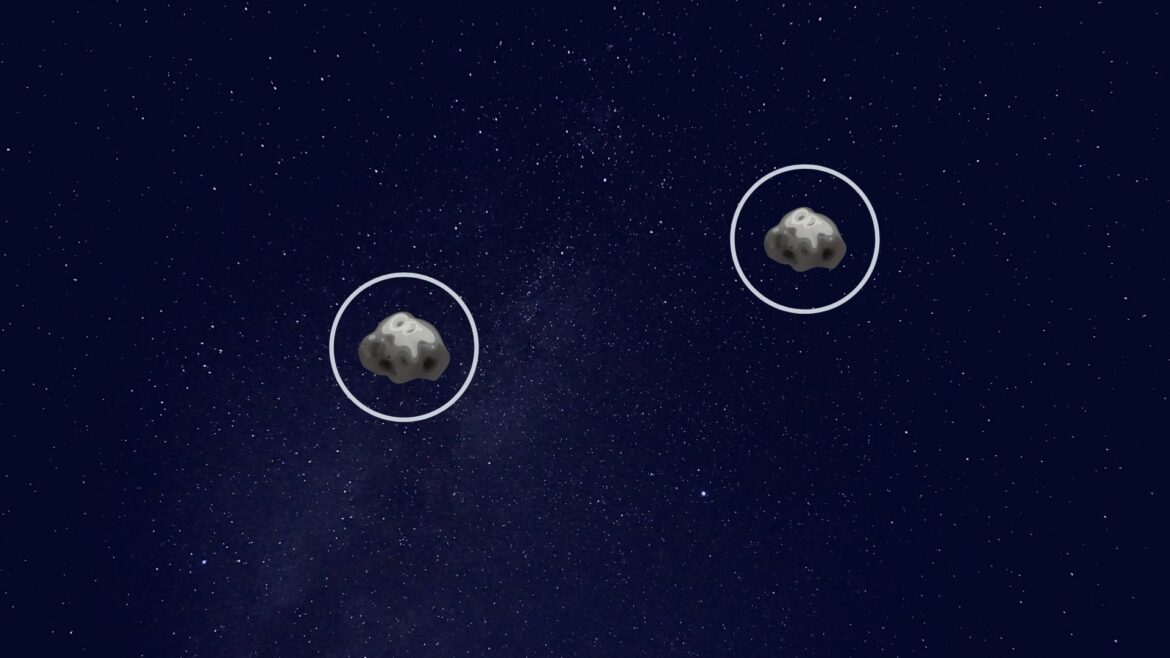Have you wondered why astronomers can find an object as tiny as an asteroid and pinpoint its orbit to the precision that it can be spotted at any arbitrary time? Let’s find out about this in this article.
The Process of Finding Asteroids
To spot asteroids, astronomers use telescopes to scan a small patch of the sky by taking multiple images. The photos are taken periodically, one after the other. How often does it take the picture? It highly depends on the sensitivity of the telescope. The higher the sensitivity, the shorter it waits for any objects in these pictures to move enough for the telescope to detect.
After that, these images are compared to see if any bright spots do not keep stationary. The objects that stay stationary relative to the images are stars because they only move very slowly relative to other stars in the celestial sphere. However, if the object seems to be moving, it gets reported to the system.
The system then compares the asteroid to a database of confirmed objects to confirm that it is not a rediscovery. Specifically, if no asteroids in the database currently appear at the new asteroid’s location, the system will think it’s a new asteroid and submit the record to the database.
Determining Whether It Is Harmful
To decide whether the asteroid can be considered hazardous, its trajectory must be considered first. This means finding its velocity and distance to obtain the object’s orbit around the Sun. After that, it is simulated against the motion of planets in our Solar System to determine its long-term path and find out whether it may impact Earth.
However, even if the asteroid will hit Earth, it is still harmless if the object is not large enough. If the asteroid’s diameter is less than 25 meters, it will likely completely disintegrate due to the enormous friction in Earth’s atmosphere. Therefore, we should use direct imaging, specifically infrared imaging, to determine the size of the asteroid after confirming its approximate distance from the Sun. If two asteroids are at the same distance from our star, the more infrared light the object emits, the larger it probably is.
Space agencies specifically monitor potentially hazardous asteroids, whose diameter is larger than 140 meters and can get to less than 0.05 astronomical units from our planet. In that case, it is considered to have a certain risk of severely damaging the impact site and its surroundings, or even our planet’s ecosystem if the object’s large enough. Therefore, they might use some techniques to try deflecting the asteroid decades or centuries in advance of its predicted impact.
Conclusion
In this article, we’ve mentioned the way that astronomers spot asteroids and how they determine what to keep an eye on. Remember that asteroids are precious scientific targets that can help us understand how our Solar System formed! For more information on this aspect, please visit the websites in the references below.
References and Credits
- (2015, March 16). How Do We Detect Asteroids? Retrieved March 24, 2022, from https://www.nasa.gov/content/asteroid-grand-challenge/detect/how-do-we-detect-asteroids
- (2017, July 1). How Does NASA Spot a Near-Earth Asteroid? Retrieved March 24, 2022, from https://www.jpl.nasa.gov/edu/learn/video/how-does-nasa-spot-a-near-earth-asteroid/
- (2013, October 28). How do you spot an incoming asteroid anyway? Retrieved March 24, 2022, from https://www.csmonitor.com/Science/2013/1028/How-do-you-spot-an-incoming-asteroid-anyway
- (n.d.). How to Measure the Size of an Asteroid. Retrieved March 24, 2022, from https://www.spitzer.caltech.edu/image/sig14-019-how-to-measure-the-size-of-an-asteroid
- (2014, June 19.). NEO Basics. Retrieved March 24, 2022, from https://cneos.jpl.nasa.gov/about/neo_groups.html
- (2014, March 31). Asteroid Fast Facts. Retrieved March 24, 2022, from https://www.nasa.gov/mission_pages/asteroids/overview/fastfacts.html

